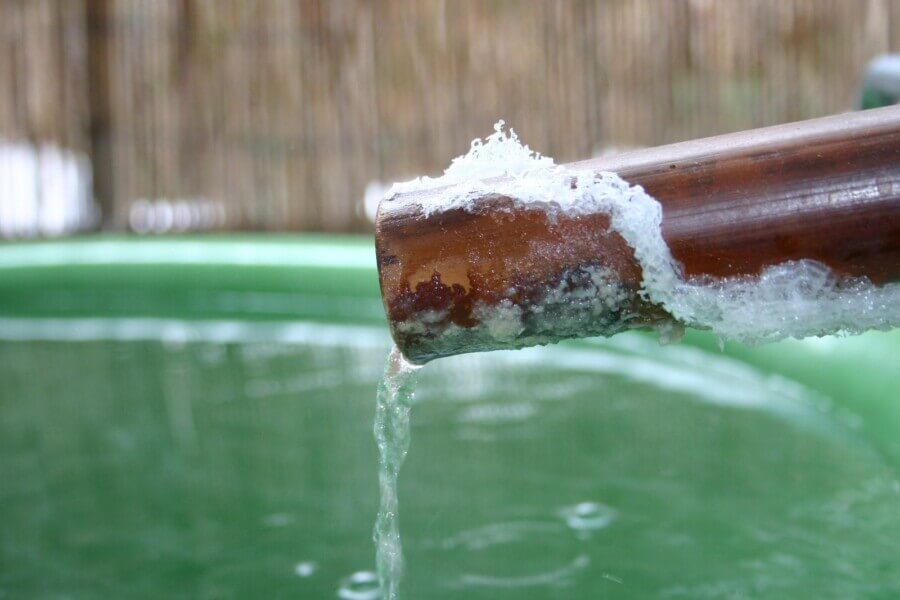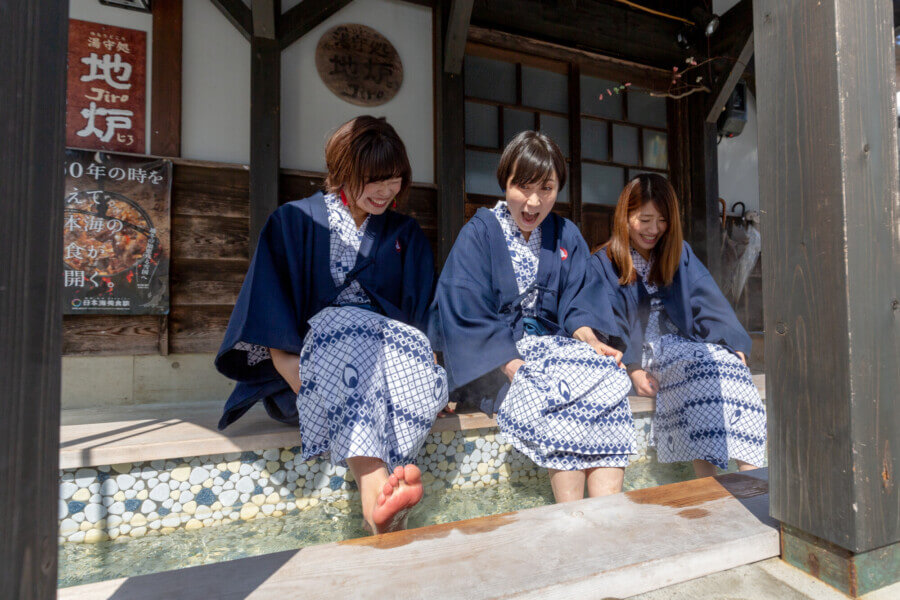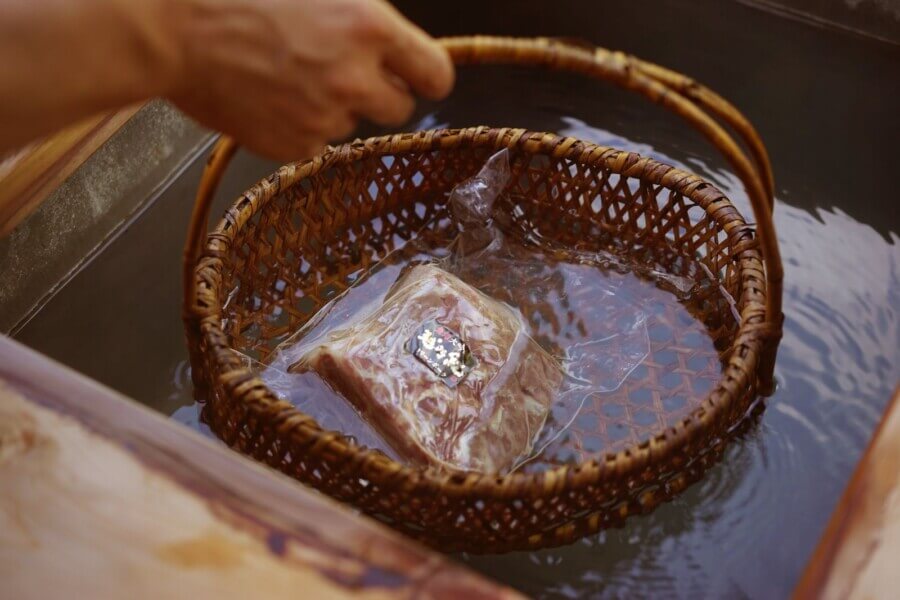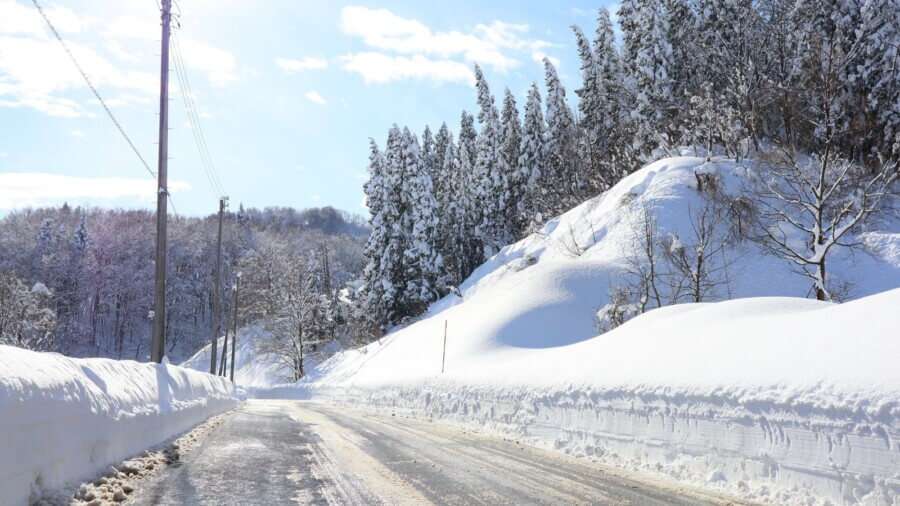
The origin of the super salty spring water
If you happen to get a taste of the Matsunoyama hot spring water, you’ll notice it is ridiculously salty. When water has a high salinity, crystals may form on the spout of the hot spring.
The reason for this high sodium content is fossilized seawater that was trapped in the earth for over 10 million years! In other words, this ocean water from ancient years past turned into hot spring water gushing up from the earth. This makes it a chloride spring, where the water can retain its heat and kill bacteria. Therefore, even after getting out of the hot spring, you will feel the effects of the warmth of your body.

The source is how hot!?!
Matsunoyama Onsen is a hot spring with multiple sources, but the temperature of most of them is as high as around 90℃.
This is called “geopressure type” and is said to be due to the fact that the hot water deep underground rises at once through a rupture.
Of course, please be assured that the temperature is adjusted to the proper level at the inns and hot spring facilities to welcome our guests.

Pork and eggs are cooked in the onsen!
Matsunoyama Onsen's specialty “Touji Pork” and “Touji Tamago” are original menu items prepared using hot spring water.
Touji Pork” is made by vacuum cooking aged Tsumari Pork ‘KoshinoKurenai’ for two hours at a temperature of 63-68℃ with the hot spring heat from the Matsunoyama Onsen hot spring. The amazing tenderness and sweetness of the pork is unforgettable once tasted.
Touji Tamago” is a hardened hot spring egg boiled in hot spring water for 24 hours. When the shell is peeled off, the egg is dyed brown. The salty taste of the hot spring water makes the eggs even more delicious.
Translated with www.DeepL.com/Translator (free version)

How can this much snow be safe?
Tokamachi City is one of the heaviest snowfall areas in Niigata Prefecture. The Matsunoyama area is especially deep in snow, with an average snowfall of 3.5 meters, and in some years the average snowfall is over 5 meters.
Despite this, the roads in Matsunoyama are always clean and well plowed. The snow removal technology of this snow country supports beautiful scenery and people's daily lives.
*Please come with snow tires or other equipment and avoid mornings and evenings when there is a risk of freezing.
*If you are not comfortable driving on snow-covered roads, please use cabs, local buses, or transportation from the inn.